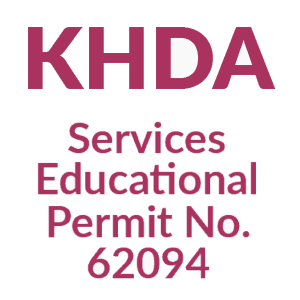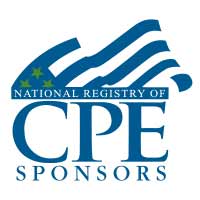Classroom Sessions:
| Date | Venue | Fees | |
|---|---|---|---|
| 07 - 11 Oct 2024 | Dubai - UAE | $5,950 |
INTRODUCTION
This GLOMACS training course is aimed at giving oil industry geologists a detailed introduction to the study of sandstone and carbonate rock-types in terms of reservoir quality. Reservoir quality analysis permits to identify the main depositional, provenance and diagenetic controls on the evolution of the poro-perm characteristics of sandstone and carbonate reservoirs (e.g. evolution of porosity vs. burial depth, mineralogical content and diagenetic environments). Examples from sandstone and carbonate oil/gas reservoirs (i.e. current East & West Africa basins) are also taken into consideration.
This training course will highlight:
- Introduction to siliciclastic and carbonate reservoirs with emphasis on controls on reservoir quality
- Sandstone composition, provenance, diagenesis, and tectonic settings
- Carbonate composition (allochems, orthochems), classification and diagenesis
- Petrographic analyses (TS, SEM, CL), XRD, QEMSCAN and integration of reservoir quality results
- Porosity classification, porosity evolution vs. burial depth, stratigraphy, composition, authigenic components and diagenetic phases/environments
- Concept of rock typing, rock typing schemes and rock typing analysis of uncored reservoir intervals (sandstone and carbonate cuttings tied to wireline logs)
Objectives
By the end of this training course, participants will:
- Understand what are the different types of sandstone hydrocarbon reservoirs and their main controls on reservoir quality
- Understand what are the different types of carbonate reservoirs and their main controls on reservoir quality
- Be able to differentiate depositional, provenance and diagenetic markers of analysed sandstones and carbonates
- Be able to integrate and interpret poro-perm data vs. stratigraphy and regional geology (e.g. well correlations)
- Understand the main rock-based methodologies of analysis applied to reservoir quality studies
- Be conversant with the concepts of Rock typing and petrophysical comparison of cuttings and core samples
Training Methodology
This training course for oil industry geologists is thus structured in oral and practical sessions, with PowerPoint presentations, didactic material/exercises and work at a polarizing microscope. Examples of SEM and CL analyses are also shown to integrate the different methodologies utilized for diagenetic/reservoir quality studies.
Such training course can also be run as on-the-job-training session, during which clients can provide their own examples of reservoirs under exploration, so that new methodologies of work and solutions to their reservoir problems can be provided. The practical sessions at the polarizing microscope will show attendees oil industry data collection methods and reservoir quality descriptions of sandstone and carbonate petro-types (core samples, cuttings, and outcrops).
Organisational Impact
Organisations sending their employees to attend this training course will benefit by:
- Having employees with a better knowledge of sedimentary petrography topics
- Having employees with a working knowledge on reservoir quality methods of work
- Having employees able to collect, analyse and interpret single well to multi-well datasets from sandstone and carbonate reservoirs
- Having employees with further skills on oil industry data collection software
- Having employees improving their performance and efficiency on data interpretation
- Having employees with a better knowledge of current sandstone and carbonate reservoirs (e.g. East-West Africa) which can be utilized as analogues for regional exploration studies
Personal Impact
The participants in this training course will:
- Have improvement in their technical skills in data collection methodologies
- Be able to work more quickly in the interpretation of reservoir quality results
- Have a set of exercises and papers for self-training sessions
- Be able to perform “lunch & learn” sessions on the studied topics at their own company
- Be able to prepare rock descriptions and chapters of geological reports utilizing the skills gained during the training course sessions
WHO SHOULD ATTEND?
This training course is suitable to a wide range of professionals but will greatly benefit:
- Sedimentary geologists of service and oil companies
- Junior to mid-level geologists carrying out rock-based geological projects
- Sedimentologists who need to be conversant on rock typing concepts
- Petrographers of small and large oil-industry organizations
- PhD students in sedimentary geology of academic institutions
DAY 1
Introduction to Siliciclastic Reservoirs
- Siliciclastic rocks, sediment texture, detrital components
- Sandstone classification, minerals and source areas, depositional markers
- Sandstone composition, provenance, and tectonic settings
- Grain size analysis and digital image analysis
- Depositional environments, provenance, and reservoir quality
- Definition of matrix and pseudo-matrix
- Compaction and authigenic components
- Diagenesis of siliciclastic rocks, diagenetic environments & sequences
- Concepts of SEM, EDAX and XRD analyses, chronology of diagenesis
- Concepts of CL analysis on the distribution of quartz cement
DAY 2
Reservoir Quality Analysis of Sandstone Rock-Types
- Reservoir quality definition and methods of work
- Cementation and reservoir quality
- Porosity types in sandstones
- Porosity-permeability analysis and interpretation, cuttings TS descriptions/analysis tied to wireline logs
- Estimating subsurface reservoir quality from outcrop samples
- Rock Typing, petrophysical assessment of cuttings, rock typing analysis of cuttings petro-types
- Rock Typing classification scheme(s) as from oil industry methodologies
- Rock Typing and reservoir quality
- Diagenetic controls on reservoir quality and porosity variation with depth & stratigraphy
DAY 3
Introduction to Carbonate Reservoirs
- Introduction of carbonate reservoirs
- Components of limestones, carbonate depositional environments and facies, calcite vs. aragonite seas in the geological record
- Matrix and authigenic components, taxa vs. mineralogy, classification of limestones
- Rates of carbonate production, microfossils, paleoenvironmental markers, carbonate platform facies, carbonates and sea level changes, regional carbonate petrography vs. stratigraphy
- Carbonate diagenesis: Neomorphism, compaction, marine diagenesis, meteoric diagenesis, burial diagenesis
- Diagenetic markers, carbonate diagenetic stages
- Dolomite textures and stable isotope signatures
DAY 4
Reservoir Quality Analysis of Carbonate Rock-Types
- Carbonate diagenesis and reservoir quality, dolomite texture vs. petrophysics, dolomitization models, limestone vs. dolostone reservoir quality
- Porosity in carbonate rocks, classification schemes, petrophysics by carbonate rock-types, porosity preservation, visual estimation of porosity vs. point count porosity
- Controls on reservoir quality, rock fabric and wireline logs, porosity evolution vs. geological time
- Carbonate reservoir models and reservoir quality, porosity vs. petro-facies
- Rock typing concepts, petrophysical assessment of cuttings, rock typing classification schemes, Rock typing datasheets, rock typing and reservoir quality
- Emphasis on single well or multi-well studies, with regional reservoir quality correlations
DAY 5
Examples of Siliciclastic and Carbonate Reservoirs and Practical Work
- Cretaceous siliciclastic reservoirs from north, east and west Africa
- Italian carbonate reservoirs, Angolan Pre-Salt (Pre-Aptian) reservoirs, Kenyan carbonates, Indonesian carbonate reservoirs, New Zealand carbonate reservoirs, Oman reservoirs
- Practical session in polarizing microscopy on: Texture, composition, diagenesis, porosity, and reservoir quality of siliciclastic and carbonate rocks-types
- Visual estimation of sandstone and carbonate porosity. Porosity of core samples (point count porosity) and point count porosity vs. CA data
- Differences in the controls on reservoir quality between sandstones and carbonates
- SEM/EDX/XRD images and plots
- References on petrography/petrophysics/reservoir quality for self-training sessions
- On successful completion of this training course, GLOMACS Certificate will be awarded to the delegates
- Continuing Professional Education credits (CPE) : In accordance with the standards of the National Registry of CPE Sponsor, one CPE credit is granted per 50 minutes of attendance
Endorsed Education Provider
GLOMACS is registered with the National Association of State Boards of Accountancy (NASBA) as a sponsor of continuing professional education on the National Registry of CPE Sponsors. State boards of accountancy have final authority on the acceptance of individual courses for CPE credit. Complaints regarding registered sponsors may be submitted to the National Registry of CPE Sponsors through its website: www.NASBARegistry.org
In Association With

PetroKnowledge
Our collaboration with Petroknowledge aims to provide the best training services and benefits for our valued clients



